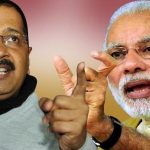
Dussehra-the major Hindu festival is celebrated throughout the country with great zeal and enthusiasm. People all over the country participate in the occasion in their own way. It is the day when Lord Rama killed the ten headed demon king Ravana and gave the throne of his kingdom Lanka to his brother Vibhishana. Since that day, the day of Vijaya Dashmi is considered to be auspicious and festive by the people of India and is celebrated as the day that symbolizes the victory of Good over Evil.
People throughout the country celebrate the occasion in their own way. But Dusshera of Mysore has its own glamour and specialty and is very famous in terms of grandeur and splendor. Each region of the country has its own specialty in the celebrations. Now days Mangalore Dassera also become very famous and popular and gaining momentum in its own way and style. People from different parts are flocking to Mangalore to witness the grand celebration of Dussehra.

People of the country engaged in different ways during entire Dussehra period of ten days by means of public processions, cultural activities, Bhajan and at some parts of the country especially in Northern side people participate in Ram Lila and Ravan Dahan. Places like Gujarat, Maharashtra, Mangalore Dandiya Ras (Garba) is being played in all the nine nights throughout this period.
Feasting and busting crackers are also an important feature of the Dusshera celebrations. At many places in the country, colorful fairs and exhibitions are also organized on this occasion.
In most of the places in the country right from ten days before Dussehra, the whole Ramayana is enacted in various parts of India. The occasion is also celebrated in many countries where people of Hindu faith are residing in a very similar manner to that of India.

It is on the tenth day that people come out in processions and chant the greatness of Lord Rama and enact the whole Rama-Ravana war on the streets. It is said that this is a way to remind people of the fact that truth always triumphs and motivate them to follow the path of dharma.
Dussehra symbolizes the conquest of good over evil. It is thus considered as an auspicious day. Even today after burning the effigy of Ravana along with his subordinates Meghanad and Kumbhkarana on the Dusshera celebrations, we simply symbolize the power of goodness and humanity is above all kind of powers.

As Lord Rama fought a battle of ten days with Ravana, who had abducted his wife Sita, the day of his victory is called Vijaya Dashmi, the tenth day of Victory. It is said that this day symbolizes not as the victory of Ram but also the victory of mankind. That is why this day is held in high regard by people who believe that whenever there will be chaos in the society and evil will try to take over humanity, God will appear in a the form of savior to protect his devotees.
Navaratri – is a festival dedicated to the worship of the Hindu deity Durga. The word Navaratri means ‘nine nights’ in Sanskrit, nava meaning nine and ratri meaning nights. During these nine nights and ten days, nine forms of Deviyas are worshipped. The tenth day is commonly referred to as Vijayadashami or “Dussehra” (also called Dasera).

Navratri is an important major festival and is celebrated all over India and Nepal. Diwali the festival of lights is celebrated twenty days after Dasera.
Navratri is celebrated five times a year. They are Vasanta Navaratri, Ashadha Navratri, the Sharad Navratri, the Paush/Magha Navratri and the Magha Navratri. Of these, the Sharad Navratri of the month of Puratashi and the Vasanta Navaratri of the Vasanta kala are the most important. The other two are observed by shaktas only.
Navaratri is celebrated as a nine days period of worship in most part of the country and dedicated to the nine forms of Hindu Deity Durga.The tenth day is the festival of Dussehra.Navratri is a combination of two words.’Nav’ means nine and Ratri means nights. Hence celebration is literally termed as ‘nine nights’. The celebration begins on the first day of the month of Ashvin according to Hindu calendar and culminates in the festival of Dussehra, on the tenth day of the month.

Navratri is celebrated as a nine days period of worship in most part of the country and dedicated to nine forms of Hindu Deity Durga.The tenth day is the festival of Dussehra.Navaratri is combination of two words ‘Nav’ means nine and ‘Ratri’ means nights. Hence the celebration is literally termed as ‘nine nights. The celebration begins on the first day of the month of Ashvin according to Hindu calendar and culminates in the festival of Dussehra on the tenth day of the month.
The festival of Dussehra is celebrated to worship the Goddess Durga,the embodiment of Devi-the supreme Goddess. The form of the Goddess Durga is said to symbolize the creative energy and the feminine body and nine aspects.Each form or aspect of the goddess has its own day dedicated to it.
The Navaratri celebrations are devoted to the worship of the Eternal mother, which has its own origins in the Vedas.Durga is also considered to be a combination of the Trinity of Goddesses-Saraswati, Parvati and Lakshmi.During Navaratri these three main Goddesses are worshipped as well. The central theme of Navaratri is the triumph of good over evil.

Celebration of the Nine Days of Navratri
Navratri lasts for nine whole days and each day has a special significance attached to it and is celebrated separately and obeisance is paid to the Trinity of Goddesses along with the nine forms of Durga.
1st to 3rd day of Navratri:-
The first three days are solely dedicated to the worship of the Goddess Durga.During this period her energy and power are worshipped. Each days is dedicated to a different manifestation of Durga.On the first day, Kumari is worshipped, which signifies the girl child. The second day is dedicated to Parvati, who is the embodiment of young woman. On the third day, Kali is worshipped. This form represents the woman, who has reached maturity.

On the first day of Navaratri, barley seeds are sowed in a small bed of mud and this mud is kept in the pooja room. By the tenth day, each seed is sprouted into a shoot which is between three and five inches long. After the Pooja performed on the tenth day, the shoots are plucked and given to the attendees and they are said to be a blessings from God.
4th to 6th day of Navratri:-
These three days are devoted to the worship of Lakshmi, the Goddess of prosperity and peace. Although these days are dedicated to Lakshmi, the Goddess Saraswati is invoked on the fifth day. This day is referred to as Lalita Panchami.On this day, all the books and other literature are gathered in one place. Then a ‘Diya’ or Lamp is lit in front of them to call upon the goddess Saraswati.
7th to 8th day of Navratri:-
The seventh days is dedicated to worshipping Saraswati, the goddess of art and knowledge. Prayers are offered to her, seeking spiritual knowledge. The knowledge of the spiritual world is said to free from our earthly bonds. This in turn will bring us closer to God.
On the eight day a ‘Yagna’ is performed. This comprises of a sacrifice, which is offered to the sacred fire. The sacrifice honors the goddess Durga as well as bids her farewell. The sacrifice or offering is made out of clarified butter (Ghee), rice pudding (Kheer) and sesame seeds.
9th day of Navratri:-
The ninth day is the culmination of the entire Navratri celebrations. This days is referred to as “Mahanavami”.On this day, a Kanya Pooja is performed. Nine young girls, who have not yet attained puberty, are worshipped during this Pooja. Each one of them symbolizes one of the nine forms of goddess Durga.Each girl’s feet are washed as a mark of respect for the goddess. At the end of the Pooja, each girl is given a set of new clothes as a gift from the devotees.
WISHING ALL THE KANNADIGAWOLD READERS ‘A VERY HAPPY AND PROSPEROUS DUSSEHRA AND NAVRATRI.’
Shekar Moily



Comments are closed.